OSH Partners with States
CDC's Office on Smoking and Health Partners with States to Protect Kids and Help People Quit Smoking
CDC’s OFFICE ON SMOKING AND HEALTH (OSH)
is the lead federal agency for comprehensive tobacco prevention and control. OSH saves lives and saves money by preventing and reducing tobacco use – the leading cause of preventable disease and death in the U.S.
Even if you haven’t heard of OSH, you’ve probably seen or felt the impact of our work:
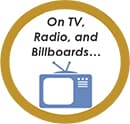
through CDC’s Tips From Former Smokers® ad campaign that has inspired 1 million Americans to quit smoking from 2012 to 2018.
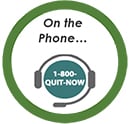
through 1-800-QUIT-NOW, which links callers to their state quitline and receives critical support from OSH.
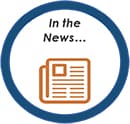
which covers OSH experts’ reports and studies about tobacco use and secondhand smoke exposure.
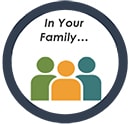
if you or someone you know has quit smoking because of OSH’s work to support and encourage tobacco cessation.
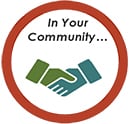
if you enjoy smokefree indoor air protections in public places that have been expanded because of our scientific research.

through CDC’s Tips From Former Smokers® ad campaign that has inspired 1 million Americans to quit smoking from 2012 to 2018.

through 1-800-QUIT-NOW, which links callers to their state quitline and receives critical support from OSH.

which covers OSH experts’ reports and studies about tobacco use and secondhand smoke exposure.

if you or someone you know has quit smoking because of OSH’s work to support and encourage
tobacco cessation.

if you enjoy smokefree indoor air protections in public places that have been expanded because of our scientific research.
More than 80% of OSH’s budget supports state and local tobacco control efforts

CDC’s National Tobacco Control Program (NTCP) is the only nationwide investment that supports all 50 states, the District of Columbia, 8 U.S. territories, and 26 tribal organizations for comprehensive tobacco control efforts and quitlines.

States use OSH funds to prevent kids from using tobacco, reduce secondhand smoke exposure, help people quit smoking, and reduce disparities in tobacco use. For every $1 spent on strong tobacco control programs, states achieve a $55 return on investment, mostly in averted health care costs to treat smoking related illness.

CDC’s Tips From Former Smokers® campaign is the only national media campaign focused on inspiring the 7 in 10 American adults who smoke and want to quit. Tips® features real people—not actors—suffering from the health consequences of smoking and secondhand smoke exposure. It connects people who smoke with resources, including a free quitline, 1-800-QUIT-NOW, to help them quit. CDC supports state and territorial quitlines to respond to the immediate and sustained spikes in call volumes they receive when the Tips campaign is on air.

Tips® saves states money. CDC’s ad development, placement, and evaluation allows states to invest in ad placement during times and in areas not reached by CDC’s Tips® campaign. CDC’s supplemental quitline support helps states meet the demands for cessation support generated by the campaign.

CDC funds data collection, evaluation, research and laboratory activities to monitor tobacco use and its health effects among U.S. youth and adults. OSH supports the state-based Behavioral Risk Factor Surveillance System, the National Health and Nutrition Examination Survey, and with FDA, supports the school-based National Youth Tobacco Survey, the nation’s premier survey of youth tobacco use.

National level surveillance systems provide consistent, reliable, and cost-effective data collection. CDC data are used by states and others to evaluate their work and monitor progress.

CDC’s National Tobacco Control Program (NTCP) is the only nationwide investment that supports all 50 states, the District of Columbia, 8 U.S. territories, and 27 tribal organizations for comprehensive tobacco control efforts and quitlines.

States use OSH funds to prevent kids from using tobacco, reduce secondhand smoke exposure, help smokers quit, and reduce disparities in tobacco use. For every $1 spent on strong tobacco control programs, states achieve a $55 return on investment, mostly in averted health care costs to treat smoking related illness.

CDC’s Tips From Former Smokers® campaign is the only national media campaign focused on inspiring the 7 in 10 American adults who smoke and want to quit. Tips ® features real people—not actors—suffering from the health consequences of smoking and secondhand smoke exposure. It connects people who smoke with resources, including a free quitline, 1-800-QUIT-NOW, to help them quit. CDC supports state and territorial quitlines to respond to the immediate and sustained spikes in call volumes they receive when the Tips campaign is on air.

Tips saves states money. CDC’s ad development, placement, and evaluation allows states to invest in ad placement during times and in areas not reached by CDC’s Tips campaign. CDC’s supplemental quitline support helps states meet the demands for cessation support generated by the campaign.

CDC funds data collection, evaluation, research and laboratory activities to monitor tobacco use and its health effects among U.S. youth and adults. OSH supports the state-based Behavioral Risk Factor Surveillance System, the National Health and Nutrition Examination Survey, and with FDA, supports the school-based National Youth Tobacco Survey, the nation’s premier survey of youth tobacco use.

National level surveillance systems provide consistent, reliable, and cost-effective data collection. CDC data are used by states and others to evaluate their work and monitor progress.
How does OSH’s coordination at the Federal level serve states?
OSH provides the critical linkages, expertise, resources, and technical assistance states need to maximize impact and minimize duplication.
Documenting the problem. OSH produces Surgeon General’s Reports (SGRs) that form the basis of our understanding of the health effects of tobacco use, secondhand smoke exposure, and evidence-based tobacco control strategies. And OSH’s epidemiologists regularly publish high-quality reports on tobacco use trends that states use to monitor progress, prioritize interventions, and reduce disparities. For SGRs, visit: Surgeon General’s Reports on Smoking and Tobacco Use.
Identifying best practices. OSH experts identify what works in tobacco control so that states don’t have to reinvent the wheel to tackle the problem. OSH’s guide, Best Practices for Comprehensive Tobacco Control Programs, outlines how states can develop, implement, and budget for an evidence-based tobacco control program. For more, visit: Evidence-based Guides for States.
Providing technical assistance and linkages for states and health systems. OSH provides one-on-one technical assistance for state tobacco control programs, partners with states and health systems working to improve insurance coverage of cessation treatments, and creates opportunities for states to regularly hear from one another and share best practices. For more, visit: Reduce Tobacco Use.

Sharing media resources. Through the Media Campaign Resource Center (MCRC), OSH provides access to existing tobacco education advertisements, allowing state, local, tribal, and territorial health departments and other organizations to save the time and high cost of producing new ads. Among the ads offered are those from CDC’s national tobacco education campaign, Tips From Former Smokers®—a valuable asset given its research-based development process and proven effectiveness. Visit the MCRC at Media Campaign Resource Center (MCRC).
Educating the public about tobacco use and young people. For example, OSH implemented a “Protecting Young People from E-cigarettes” communication initiative to raise awareness among parents, educators, and health care providers about the risks of e-cigarette use among young people. Communication materials included print and radio PSAs; social media and digital display ads; fact sheets; presentation for delivery to youth audiences; partner toolkit; and web pages for syndication. These resources make science accessible to the public and reduce the need for states to develop their own materials. For more, visit: Electronic Cigarettes.
Tracking and visualizing data. Through OSHData, OSH presents comprehensive tobacco prevention and control data online in an easy to use, interactive application available to states, researchers, media, and the public. Visit: OSHData.




